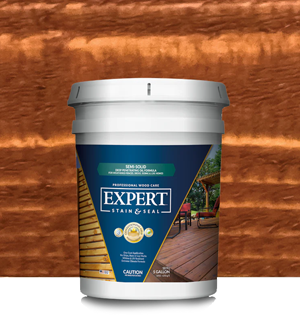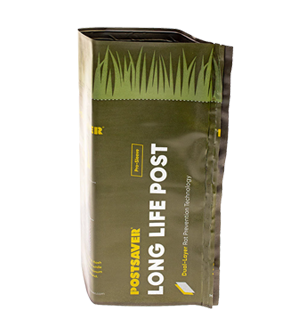Understanding Wood Rot Repair Costs: A Comprehensive Guide
 Wood rot can weaken structural components, create safety hazards, and reduce property value. The repair costs will vary depending on the extent of the damage, the type of material, and whether replacement materials are required.
Wood rot can weaken structural components, create safety hazards, and reduce property value. The repair costs will vary depending on the extent of the damage, the type of material, and whether replacement materials are required.
This is why a thorough inspection is essential to determine the scope of work, from minor cases on trim work to major framing and siding replacement.
By addressing wood rot promptly, homeowners can prevent further damage and reduce long-term expenses.
For example, ignoring early signs such as a musty smell, rotting wood, or moisture exposure often leads to higher labor costs and more extensive repairs.
In contrast, regular maintenance, including proper wood care, helps protect affected wood and extend the life of your home’s structure. You can learn more about this in our guide below.
NOTE: Homeowners and property managers can explore strategies for reducing maintenance expenses in our guide on how HOAs and property managers can save. Installing a fence guard is another effective way to prevent decay near ground-level posts.
What Is Wood Rot?
Wood rot is the decay of wood caused by fungi that break down the material’s fibers. Over time, this process weakens the structure, making it less able to bear weight or resist pressure.
Once the fungus establishes itself, it can spread through affected wood and eventually compromise nearby areas if left unaddressed.
There are two main types of wood rot to consider. Dry rot develops in areas with limited moisture but poor ventilation. It often appears reddish-brown, has a brittle texture, and gives off a musty smell.
In contrast, wet rot occurs in consistently damp environments, such as spaces exposed to leaks or poor drainage. Wet rot usually leaves the wood darker, softer, and spongy to the touch.
By identifying which type of rot is present, homeowners can choose the most effective repair method and materials. For instance, replacing damaged posts may require a fence post puller to safely remove old wood without harming nearby structures.
After repairs are complete, adding a fence post guard offers ongoing protection against moisture exposure and future decay. With this knowledge, it becomes easier to take proactive steps that prevent costly structural damage.
Factors Influencing Wood Rot Repair Costs
Several factors determine the total cost of repairing wood rot. Understanding these elements helps homeowners plan their budget and choose effective solutions.
Extent of Damage
The cost to fix wood rot depends greatly on how much of the structure is affected. Minor surface damage on trim or siding can often be repaired quickly. In contrast, extensive structural damage may require replacing framing, siding, or support beams.
NOTE: Using a post rot protector can help prevent future decay and reduce the need for repairs.
Location
Where the damage occurs influences repair costs. Areas such as crawl spaces, attics, or behind walls may be harder to access, requiring more labor. Repairs in visible and accessible areas are generally faster.
For communities, reducing HOA landscape maintenance fees with Fence Armor post guards can help protect posts and avoid location-based repairs.
Material Type
The type of wood and any staining and finishes applied impact both repair methods and costs. Hardwood species or specialty finishes may require specific replacement materials.
Matching paint, fence stains, or sealants can also add to the overall repair cost while ensuring a consistent look with the rest of the structure.
Labor Costs
Labor rates vary by region and the complexity of the job. Skilled contractors may charge more for intricate repairs, especially when restoring decorative trim or custom framing.
Larger projects that involve multiple areas or structural components will naturally require more labor hours and higher overall costs.
Estimated Repair Costs
Repairing wood rot can range from a simple touch-up to major structural restoration. Costs depend on the severity of the decay, the materials used, and the location of the damage.
Preventative products, such as a post saver sleeve, can help reduce future expenses by protecting posts from moisture exposure. Below are general cost ranges to consider:
-
Minor Repairs: $200–$500 for small areas such as window sills, trim, or localized siding damage.
-
Moderate Repairs: $1,000–$3,000 for repairing beams, larger sections of siding, or partial framing replacement.
-
Extensive Repairs: $5,000–$12,000 for widespread rot that compromises foundations, roofs, or major structural components.
Note: These figures are general estimates and can vary depending on regional labor rates, accessibility, and project requirements.
Specialized Repair Costs
Some wood rot problems require specialized repairs because of their location, structural importance, or safety risks. These repairs often involve more labor, specific expertise, and the proper tools.
Using quality wood fence tools during regular maintenance can help prevent these issues from developing. Below are common specialized repair cost ranges:
-
Chimney Wood Rot Repair: Minor repairs may range from $200–$500, while extensive damage involving structural elements can cost $1,000–$4,000.
-
Floor Joist Replacement: This is a more complex project, often costing $4,000–$12,000 depending on the extent of the damage and accessibility of the joists.
Understanding these costs allows homeowners to budget effectively and plan for preventive measures that protect key structural components.
DIY vs. Professional Repairs
Choosing between DIY work and hiring a contractor depends on the severity of the damage, your skill level, and your available tools:
DIY Repairs
Handling wood rot repairs yourself can save money on minor issues, such as small patches on trim or siding. It allows flexibility in timing and materials.
However, without proper experience, there is a risk of leaving behind affected wood, which can lead to recurrence.
Ensuring the right tools and products are used is essential. Homeowners who enjoy hands-on projects may also use the opportunity to improve property features, such as planning the best fence for your backyard for added value and protection.
Professional Repairs
Hiring a professional ensures a thorough inspection and complete treatment, reducing the risk of hidden decay. Many contractors provide warranties on their work, offering peace of mind.
The main drawback is the higher upfront cost compared to DIY repairs. Skilled contractors also have access to specialized tools and materials, which can enhance results.
In addition, a professional upgrade can enhance curb appeal with Fence Armor post guards while preventing future damage to vulnerable areas.
Preventing Wood Rot
Taking preventive steps protects your home’s structure, reduces repair costs, and extends the life of wood components. Below are effective strategies to consider:
Regular Maintenance
Begin by inspecting high-risk areas such as siding, decks, and window frames at least twice a year. Look for early signs of discoloration, cracks, or soft spots.
Next, clean and seal exposed surfaces regularly to guard against moisture damage.
Using quality fence staining equipment helps maintain protective coatings on outdoor wood, while adding a fence protector can shield posts from contact damage and ground moisture.
With consistent upkeep, you can greatly reduce the likelihood of decay and extend the life of both structural and decorative wood features.
Proper Ventilation
In addition, ensure there is adequate airflow in enclosed spaces such as attics and crawl spaces. This prevents humidity buildup that can lead to fungal growth.
Make sure vents are unobstructed and functioning correctly, and consider installing vent fans or ridge vents where natural ventilation is insufficient.
By maintaining proper ventilation, you not only limit the conditions in which wood rot thrives but also promote a healthier indoor environment.
Moisture Control
Finally, address sources of excess moisture as soon as they appear. Repair leaks in roofing, siding, and plumbing without delay, and use gutters and downspouts to channel water away from the foundation.
In humid climates, dehumidifiers can help maintain balanced moisture levels. For additional protection, installing a fence post sleeve creates a barrier against ground moisture, safeguarding vulnerable posts.
By controlling moisture, you significantly reduce the risk of both wet and dry rot.
Key Takeaways on Understanding Wood Rot Repair Costs
Timely wood rot repair plays a key role in preserving both the strength and value of your home. By addressing issues early, you can prevent further damage and avoid higher repair costs in the future.
A professional assessment helps ensure that every affected area is properly treated and restored. In addition, understanding local regulations, such as those covered in our guide on property boundaries and the law, can guide proper maintenance decisions.
Explore Fence Armor for solutions that protect vulnerable areas and extend the life of your structures, making repairs less frequent and more cost-effective.
Frequently Asked Questions (FAQs)
Here are quick answers to common questions about wood rot repair and prevention.
What Is the Average Cost to Repair Wood Rot?
The average cost ranges from $500 to $3,000, depending on the severity and location of the damage. Larger repairs involving structural components or hard-to-access areas may increase costs.
Can I Repair Wood Rot Myself?
Minor surface repairs can be DIY, but extensive damage should be addressed by professionals to ensure proper treatment. Professional work also reduces the risk of recurrence.
How Can I Prevent Wood Rot in the Future?
Regular inspections, proper ventilation, and moisture control are key preventive measures. Addressing small issues early helps avoid costly repairs later.
Here are additional Fence Armor products and collections you can explore to meet your fencing and wood care needs:
Speed Square | Mr Fence Tools | Semi Transparent Stain | Chain Link Fence Bottom Guard | Stain Stripper | Mr Fence Protector | Expert Stain and Seal | Decorative Fence Post Caps | 4x4 Post Protector | Fence Finials | Framing Jig | Vinyl Fence Rail Removal Tool | 4x4 Deck Post Anchors | Aluminum Balusters | Mailbox Post Protector | Fence Hangers | EZ Template | Baluster Connectors
















